New Gas Chromatography Products at Pittcon 2008
LCGC North America
This annual "GC Connections" installment reviews GC instrumentation and accessories shown at this year's Pittcon and also includes some products from Analytica in Munich.
Attendance at this year's conference was strong with a total of 19,536 registrants divided into 45% exhibitors and 55% conferees, students, and media. This represents about a 12% drop in total attendance compared with last year's Chicago venue, a trend that is consistent with previous years: each time the conference has moved south attendance has gone down slightly compared to the year before. Interestingly, the total number of technical sessions increased in 2008 by about 20% compared to 2007, which also is consistent with the trend in recent years and indicates that the drop in attendance did not come from conferees who presented or participated in the multitudinous papers and posters. The technical sessions remain a strong attractor for Pittcon, along with the exhibitors and their booths on the convention floor. Next year, the conference returns to Chicago to celebrate its 60th anniversary.
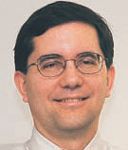
John V. Hinshaw
Gas Chromatography at Pittcon 2008
Last year was a banner year for new gas chromatography (GC) instrument introductions at Pittcon. Predictably, because so many companies had expended so much effort the year before, this year's crop of new instruments was smaller, but still significant. The GC business is going strong. In addition to this year's crop of brand-new instruments, companies promoted their existing systems in a variety of creative ways including application-specific initiatives, new or improved accessories, and upgraded software. I have added supercritical fluid chromatography (SFC) instruments and accessories to this year's list — there was significant activity in this area and, while it is neither GC nor liquid chromatography (LC), SFC arguably falls closer to GC.
This annual "GC Connections" installment reviews GC instrumentation and accessories shown at this year's Pittcon, and I also will include some products from Analytica in Munich the first week of April; some of the entries were introduced earlier, in 2007. For a review of new chromatography columns and accessories, please see "Column Watch" in the March and April 2008 issues of LCGC (1,2). The information presented here is based upon manufacturers' replies to questionnaires, as well as on additional information from manufacturers' press releases, websites and product literature. During the conference, I took the time to walk around the convention aisles and see some of the new products firsthand as well as discover a number of items that were not covered by the questionnaires. Every effort has been made to collect accurate information, but due to the preliminary nature of some of the material, LCGC cannot be responsible for errors or omissions. This article cannot be considered to be a complete record of all new GC products shown at this year's Pittcon because not all manufacturers chose to respond to the questionnaire, nor is all of the submitted information included here due to the limited available space and the editor's judgment as to its suitability.
Instrument Systems
This year's new instrument crop (see Table I) includes new GC systems from Shimadzu (Columbia, Maryland) and Varian (Walnut Creek, California), as well as a number of mass spectrometry (MS) systems, a new micro GC platform, a few application-specific systems, and an SFC instrument system. The main themes across all of these platforms are performance, reliability, and for routine systems, low cost.
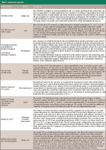
Table I: Instrument systems
Varian introduced the model 450 and model 430 GC systems; the 450 is a flexible multichannel system, while the smaller 430 is aimed at routine laboratories and those on a budget. Both feature rapid heating and cooling.
Also from Varian, the 300-MS GC–MS triple-quadrupole system brings higher performance to GC–MS. The 300-MS also is available in an upgradeable single-quadrupole configuration. Shimadzu showcased the model GC 2014, a new design that is based upon the earlier 2010 system. The new GC system adds a larger oven, a new series of detectors, and a new keyboard–display. Thermo Fisher (Waltham, Massachusetts) has upped its ion-trap offerings with the ITQ Ion Trap GC–MS series, which includes three incremental systems spanning maximum mass ranges from 700 to 1100 amu and adding MS-MS capability at the top end. C2V (Enschede, The Netherlands) displayed its C2V-200 micro GC system, which features interchangeable separation modules and can be mounted to a standard SP76-1.0 NESSI compatible platform.
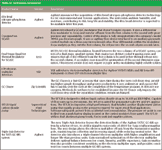
Table II: Instrument accessories
In the realm of application-specific analyzers, PerkinElmer (Shelton, Connecticut) introduced two as part of its new EcoAnalytix initiative, a collaborative problem-solving business that creates application-based solutions for supporting local, regional, and global initiatives. The biodiesel analyzer is a unique dual-oven system based upon the Clarus GC system that performs applicable EN and ASTM standard analyses for glycerin and methanol. The melamine analyzer uses a preconfigured Clarus GC–MS system to monitor melamine contamination in food. From Arnel (Parlin, New Jersey), the models 1117 and 1317 high-speed refinery gas analyzers produce a full range analysis of refinery gas, from helium through C6-plus in 7.5 min.
Finally, Thar Instruments (Pittsburgh, Pennsylvania) brought its Method Station-II SFC instrument system to New Orleans. Analytical SFC, which has seen increasing interest in recent years, provides an efficient platform for chiral separations, and also is a "green" alternative for many high performance liquid chromatography (HPLC) separations. The Method Station-II provides a separation platform with mobile phase delivery, injection, oven, and detector systems.
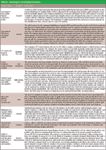
Table III: Autosamplers and sampling accessories
Instrument Accessories
Several companies introduced instrument accessories this year. Agilent Technologies (Wilmington, Delaware) showed a cryogen-free modulator for GC×GC midpoint trapping and release that is built around its capillary flow technology. The device traps a fraction from the first column and then releases it seconds later into the second column without using cryogens such as liquid nitrogen.
Also from Agilent, the Triple-Asix detector for the company's 5975C GC–MS quadrupole detector yields a factor of two improvement in detection limits by moving the electron multiplier off-axis from the quadrupole and by implementing gain-normalized optimization. Agilent also announced a new nitrogen–phosphorus detection (NPD) system, the Blos Bead NPD, which has exceptional stability and life compared with other designs.

Table IV: General accessories
Leco (St. Joseph, Michigan) displayed a GC×GC Thermal Modulator that requires no cryogen for most solutes, except for the most volatile ones. The dual-jet device creates two distinct trapping zones, which ensures more efficient trapping. The system also accomodates a secondary oven for the second dimension of the separation so that the second separation is freed from having to follow the same temperature ramp as the first column.
The GC Chaser from Zip Scientific (Hodson, New Hampshire) is an add-on, cool-down accessory that speeds oven cool-down times and increases sample throughput. SGE (Austin, Texas) has added two more electron multiplier detectors to its ETP line, for Agilent 5973/75 MSD systems and Scienx API instruments. The ETP product line recently (July 2007) was awarded an R&D 100 Award for its MagneTOF electron multiplier. From Supercritical Fluid Technologies (Newark, Delaware), the SFT-20 liquid carbon dioxide pump is suitable for use with SFC columns as well as for supercritical fluid extraction.

Table V: Instrument software
Autosamplers and Sampling Systems
There was a lot of activity in the autosamplers and sampling systems area this year. EST Analytical (Cincinnati, Ohio) showed its latest purge-and-trap sample device, the Encon Evolution, which includes a foam sensor, modular electronic pressure control, and a short desorption pathway. Gerstel (Baltimore, Maryland) introduced two new products: an automated disposable pipette extraction system for performing solid-phase extraction (SPE) using sorbent placed inside a the tip of a standard pipette, and the MultiPurpose autosampler with an integrated weighing option that monitors and weighs liquid standards, reagents, or diluents as they are added to a sample. Also from Gerstel, the Automated TDU-Liner EXchange option for the MultiPurpose autosampler enables the introduction of liquid samples directly into microvial inserts used for thermal desorption and thermal extraction.
SMI-LabHut, Ltd. (Gloucestershire, UK), showed the HT280T Headspace, Liquid, and SPME autosampler, a configurable autosampler that can perform headspace, liquid, or solid-phase microextraction (SPME) with minimal effort to change modes. Markes International (Llantrisant, UK) displayed the UNITY 2 Platform thermal desorber and ULTRA 2 Multi-tube autosampler. The devices sample from a single or multiple standard TD tubes and support electronic radio-frequency identification (RFID) tube tags for positive sample identification and tracking. Camsco (Houston, Texas) was at the conference offering its product lines of thermal desorption tubes, which are compatible with most thermal desorption samplers on the market.
From Modular SFC, LLC (North Attleboro, Massachusetts), the CFC Series SFC fraction collector uses centrifugal force to hold solute entrained in carbon dioxide SFC column effluent as the mobile phase evaporates; the system has no special venting requirements and uses standard HPLC fraction collection vials.
General Accessories
A few notable new products fell into the general category at this year's Pittcon. The MeltFit One from NLISIS Chromatography (Veldhoven, the Netherlands) is a very useful accessory for those chromatographers who must connect capillary tubes with no dead volume; the system melts an outside tube over the ends of two tubes to be connected and then uses a vacuum to draw the outer tube tightly over the joined capillaries. The product won the Pittcon 2008 Editors' Choice Silver Award. Another accessory of note is the Cepure Zero Septum from Pawling Scientific (Pawling, New York), which features a molded low-bleed O-ring design that is squeezed shut by septum nut pressure until a syringe needle pushes it open for injection. Finally, Matheson (Montgomeryville, Pennsylvania) is offering the Chrysalis II HPNM hydrogen generators, which use pure deionized water for hydrogen generation without chemical solutions; the purification system automatically regenerates, and a digital display gives status and diagostics.
Instrument Software
I have limited the products mentioned in this category to just two, mostly to conserve space and also because they are more closely related to the instruments than to pure data processing, LIMS, or data management. First is the latest upgrade to Agilent's Deconvolution Reporting Software (DRS) package that adds support for reporting AMDIS deconvoluted results in the company's MSD ChemStation QEdit program and also generates summary reports of both MSD and AMDIS deconvolutions.
The second item in this category is the new Clearview deconvolution software from Markes International. This program uses dynamic background compensation (DBC) algorithms to distinguish between chromatographic peaks and GC background and baseline anomalies, then eliminates background ions to produce a corrected total ion chromatogram (TIC) that can be processed and measured more easily.
Conclusion
The yearly stream of Pittsburgh Conferences continues unabated. I am no record holder, but I have attended all but about three years since the last time it was held in Cleveland, in 1979. Next year, 2009, will mark the 60th anniversary of the conference, the 30th anniversary of my first Pittcon, and coincidentally, the 15th time that this review has appeared in LCGC. Going back over all those wrap-up articles, it is clear that while honing and perfecting existing techniques and applying them to all manner of analytical chemistry challenges, chromatographers will continue to develop new concepts that will find their way onto the exhibition floor of conferences such as Pittcon and Analytica.
John V. Hinshaw "GC Connections" editor John V. Hinshaw is senior staff engineer at Serveron Corp., Hillsboro, Oregon, and a member of LCGC's editorial advisory board. Direct correspondence about this column to "GC Connections," LCGC, Woodbridge Corporate Plaza, 485 Route 1 South, Building F, First Floor, Iselin, NJ 08830, e-mail lcgcedit@lcgcmag.com
For an ongoing discussion of GC issues with John Hinshaw and other chromatographers, visit the Chromatography Forum discussion group at http://www.chromforum.com.
References
(1) R.E. Majors, LCGC 26(3), 238–253(2008).
(2) R.E. Majors, LCGC 26(4), 334–350 (2008).
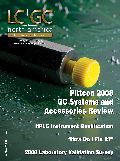
Troubleshooting Everywhere! An Assortment of Topics from Pittcon 2025
April 5th 2025In this installment of “LC Troubleshooting,” Dwight Stoll touches on highlights from Pittcon 2025 talks, as well as troubleshooting advice distilled from a lifetime of work in separation science by LCGC Award winner Christopher Pohl.












